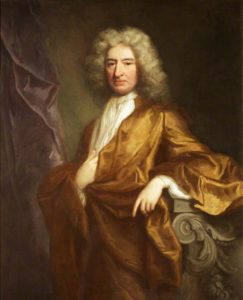
Cassidy, John; Edward Colston (1636-1721); Bristol Museums, Galleries & Archives; http://www.artuk.org/artworks/edward-colston-16361721-266112
Though Black Lives Matter as a movement was born in the United States in 2013, it became internationalized in 2020 after the murder of George Floyd. This became apparent to many when activists in the British city of Bristol toppled a statue of the English merchant and slaver Edward Colston in June 2020. And now, just this week, Sage Willoughby, Rhian Graham, Milo Ponsford, and Jake Skuse, who were charged with criminal damage in the toppling of the statue, were acquitted by a British jury.

Richardson the elder, Jonathan; Edward Colston (1636-1721); Bristol City Council; http://www.artuk.org/artworks/edward-colston-16361721-185146
The prosecution argued that the jury should have put on some metaphorical blinders; to look strictly at the act of a group of people vandalizing a public monument. It was irrelevant that the statue commemorated a man who dealt in human cargo as deputy governor of the Royal African Company. Estimates claim that Colston oversaw the transport of 84,000 men, women, and children, 19,000 of whom died in his custody. In so doing, the British government sought to impose what the Guardian called a “moral blindness” upon the jury. The defense, however, did not deny that they committed the act. They wanted to emphasize whether or not the act was criminal given the nature of the statue; that in celebrating a slave trader hundreds of years after his death, the statue itself constitutes a sort of hate crime. The case received so much attention that the British street artist Banksy, himself from Bristol, designed shirts honoring the statue’s toppling. Bristolians turned up in droves to buy one, with some appearing online for resale for as much as £9,000. Three of the four defendants were wearing those shirts when they victoriously stepped out of the courtroom on Wednesday.
The original Colston statue was recovered from Bristol Harbour, lightly cleaned (just enough to prevent corrosion, but not enough to remove the graffiti), and displayed at the M Shed Museum. No decision has been made as to the statue’s fate or what to do with the plinth still left standing. Now that a jury has acquitted the activists, the spotlight has now fallen on those who continue to defend keeping public memorials and other artworks dedicated to unsavory and despicable figures. Perhaps this is a signal that removing controversial monuments from their public pedestals will become increasingly easier.
